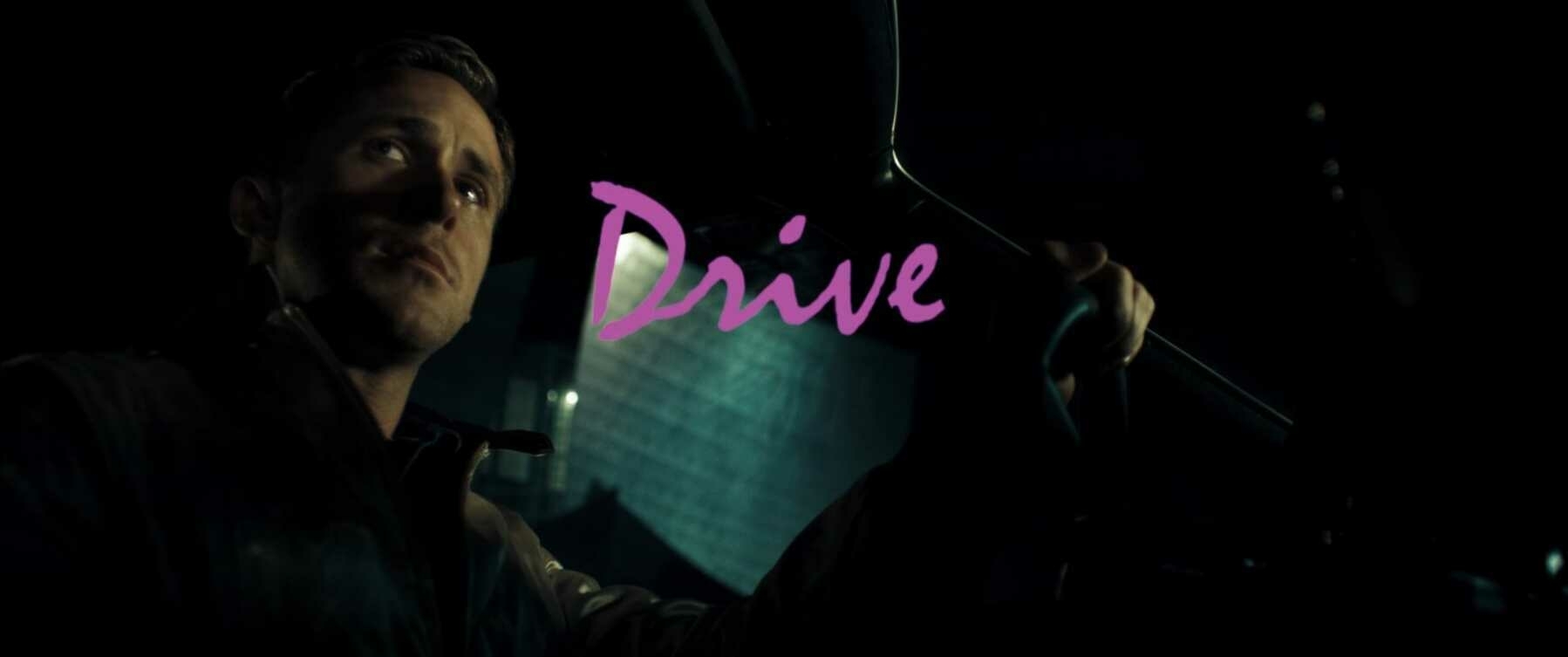Title Card: Drive (2011)
Drive was written by Hossein Amini as an adaptation of the novel of the same name by James Sallis, and was directed by Nicolas Winding Refn. It was released in 2011. It was produced by Bold Films, Oddlot Entertainment, Marc Platt Productions, and Motel Movies. The title designer was Jay Johnson.
Stunt driver by day and getaway driver by night, the character of Driver, played by Ryan Gosling is a force to be reckoned with. Seriously, don’t make the mistake of crossing him. After falling for his next-door neighbor, Irene, played by Carey Mulligan, he finds himself forced into violence when her husband, Standard, played by Oscar Isaac, is released from jail. Standard owes some powerful people money, and the only way to keep Irene and her child safe is for Driver to assist in a pawn shop robbery. When things go south during the heist, Driver has to rain vengeance down on anyone who means to harm the people he cares for.
What a strange sequence of titles this film employs. Sure, this is one stylish as hell movie, but the bright pink, ‘80s-inspired look of that text seems so incongruous to the rest of the story. It’s a conscious choice on the part of the director to go with something so dramatic and eye-catching. Titles like these don’t happen by accident. However, aside from the throaty roar of the car chase sequences and the gruesome violence, this is a fairly quiet film. Its characters don’t demand attention, save for Albert Brooks and Ron Perlman. Most of the interactions between Driver and Irene are peaceful and fun (that is, until the horrifying scene in the elevator when Driver beats an assassin to death). Nothing about these two characters screams “look at me!” quite like those titles do.
Pairing such flashy titles with a couple of shy, introverted characters serves the film well, though. It keeps the viewer on edge, and always wondering what the film is going to surprise you with next. Make no mistake, there are some surprising moments to be had here. The sweet looks that Driver and Irene share will not prepare you for how gruesome some moments are. It shocked me when I saw it, so much so that I considered it a revelation by the end of its running time. I ended up watching all of the credits in the theater because I was unable to move from my seat for a long time. I had no idea a film could be this way, and it’s still one that amazes me.
For the cinematography fans out there (like me!), please enjoy the video that Tony Zhou of Every Frame a Painting made for Drive. It examines cinematographer Newton Thomas Sigel’s use of a quadrant system, which breaks up the frame into four distinct zones of focus. It is a phenomenal video that examines how many different stores can be told within a single shot. The artistry that went into this film remains impressive. 🎞
